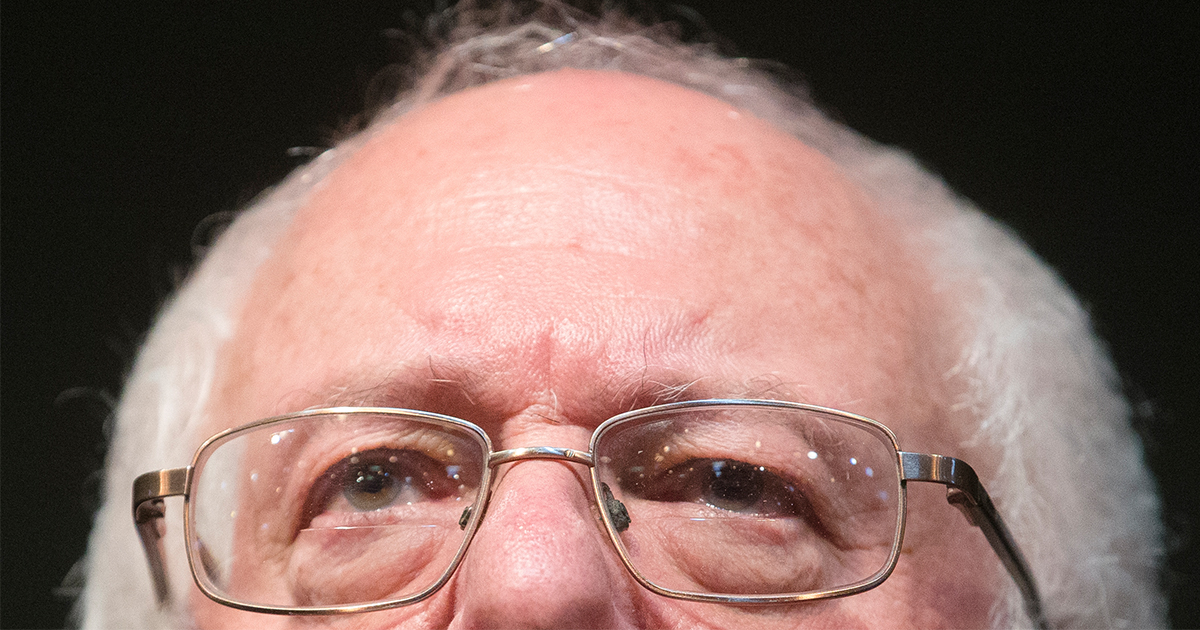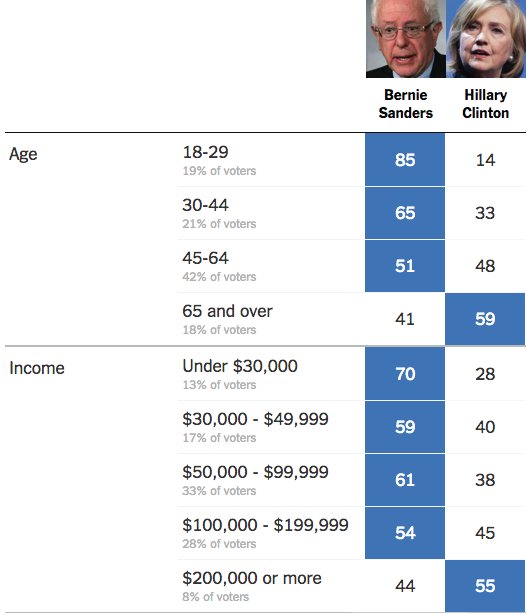These Voters Killed Bernie Sanders' Chances in the Ohio Primary

By:
Older voters dominated the Ohio primary vote on Tuesday, a trend that benefited the projected winner, Democratic presidential Hillary Clinton. While opponent Bernie Sanders fought for the right of young people to vote in the state's electoral event, not enough young people turned up at the polls.
 AP/John Minchillo - apimages.com
AP/John Minchillo - apimages.com
Exit poll data showed that voters over 50 represented more than half of the Ohio primary vote while less than 10 percent of voters fell into 18-24 demographic.
This did not help Sanders, who trailed Clinton by single digits in the latest national polls but lost by a much wider margin (22 points at 6:22 p.m. PST) on Tuesday.
Sanders' appeal with Millennial voters has become a well-established pattern in the 2016 primary season — just as Clinton has traditionally appealed to older voters — but while much has been made of the enthusiasm of young Sanders supporters, the demographic failed to turn out in substantial numbers.
Ohio represents a major upset for Sanders.
The Center for Information and Research on Civic Learning & Engagement, a research organization that analyzes youth voting trends in the U.S., recently ranked states in terms of the potential impact of young voters in the 2016 election. Ohio earned the fourth place spot, with a youth electoral significance score of 3.29.
From the Center for Information and Research on Civic Learning & Engagement:
"There are 1.7 million young citizens in Ohio, and 440,000 students under age 30 enrolled at one of the 385 institutions of higher education in the state. Ohio has above-average turnout rates, has a higher rate of poverty than other states, and has a diverse youth population, including 12% Black youth, 24% married, and 26% who have children. That is the highest ratio of young people with children among the top ten YESI states, suggesting that many Ohio youth may be more likely to prioritize issues that are relevant for young families, such as health care, early education, and minimum wage."
In New Hampshire, which came in second place, young voters contributed heavily to Sanders' primary win.
 New York Times
New York Times
"The Buckeye State has 1.7 million young people and 385 institutions of higher education," Mother Jones reports. "Voter turnout among young Ohioans in the last presidential elections was higher than the national average."
Sanders fought for young voters in Ohio.
As ATTN: recently reported, Sanders won a federal lawsuit against Ohio Secretary of State Jon Husted earlier this month after he sued for the right of older 17-year-olds to vote in the state's presidential primary. He filed the lawsuit after reports emerged of alleged changes to Ohio's 2015 election manual, which reportedly prohibited 17-year-olds who turn 18 by election day from participating, when prior to that change they would have been eligible to vote.
(This story is more complicated than it seems, however, as Ohio officials contended that 17-year-olds were never allowed to vote for presidential candidates in the state primary; their voters were simply segregated and not counted, The Dayton Daily News reports. Read the full story here for more information.)
While the Sanders' campaign celebrated the county judge's decision to allow these voters to participate in the presidential primary as a victory for young people, it was also widely considered a win for Sanders, who was most likely to benefit from the state's amended electoral policy.
